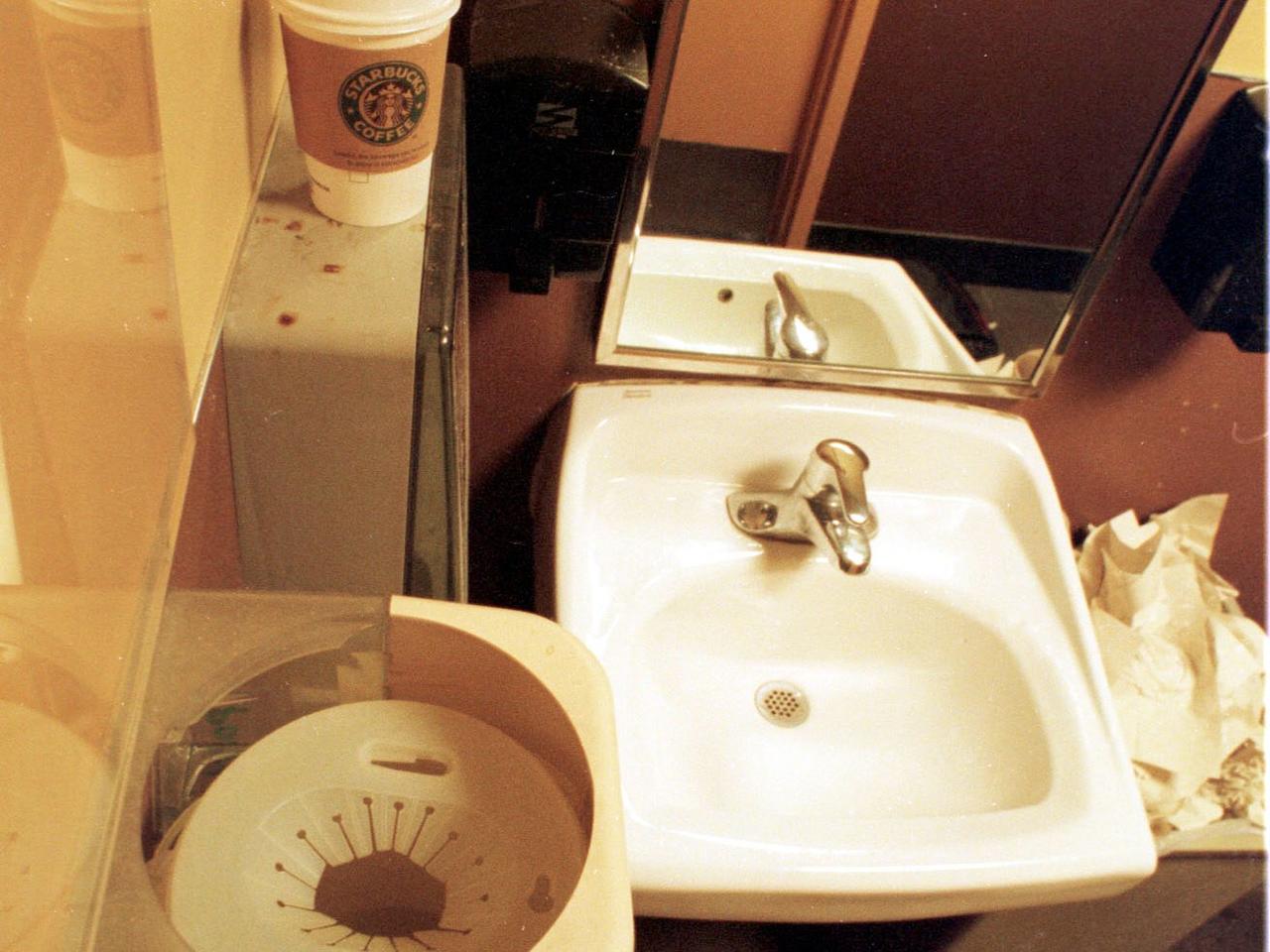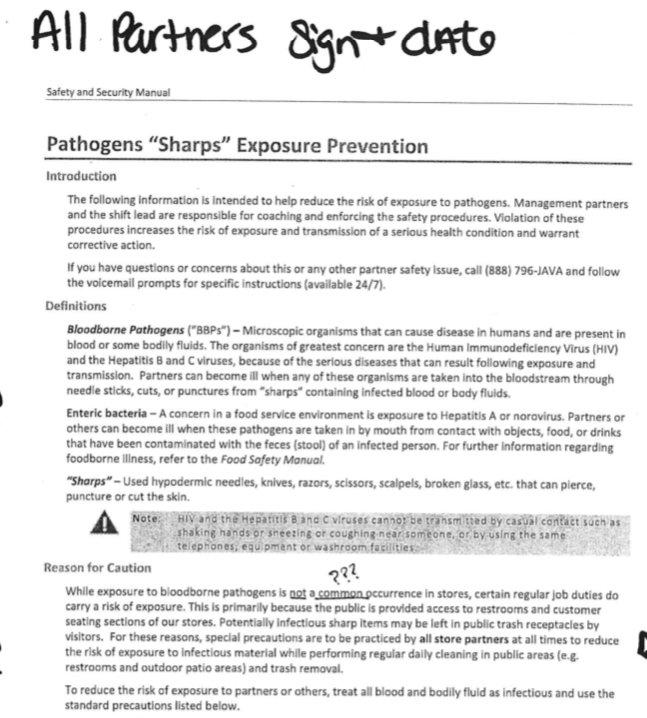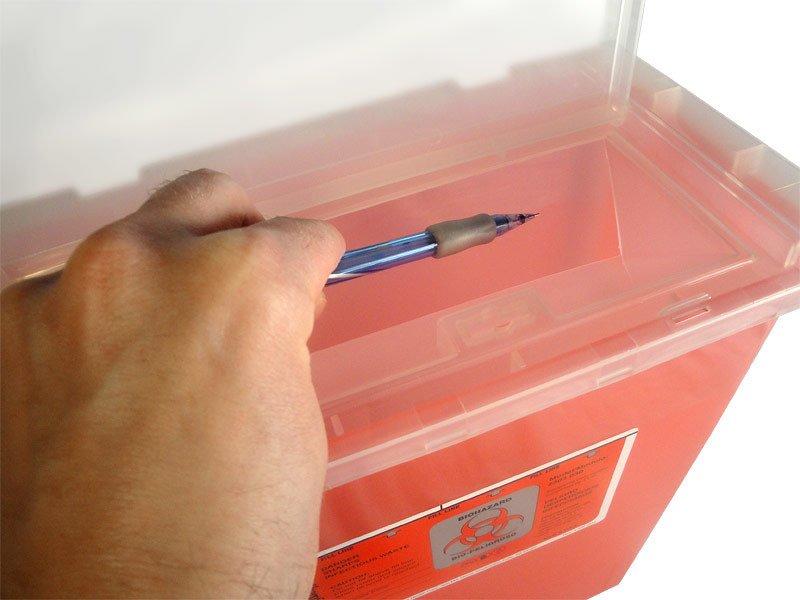The 19th century had opium dens. We have Starbucks.
A little over half a year after it became the “world’s biggest public toilet“, Starbucks’ efforts to address the resulting spiraling drug use (including opioids) in its bathrooms – while alienating as many of its legacy clients as possible – are expanding.
According to Business Insider, Starbucks – which is now moonlighting as a safe house for both needles users across the country – will install needle-disposal boxes in bathrooms in stores in at least 25 US markets in the coming months. By this summer, the chain aims to have installed sharps boxes in bathrooms in all regions where such action has been deemed necessary. In other words, every Starbucks (public) bathroom will soon become a congregation space for both drug users and, soon after, their dealers.
“We are always working and listening to our partners on ways we can better support them when it comes to issues like these,” is how Starbucks representative Reggie Borges explained the company’s new drug-friendly strategy to Business Insider.

Starbucks has been testing solutions in recent months as workers’ safety concerns have mounted, with thousands of employees signing a petition calling for Starbucks to place needle-disposal boxes in high-risk bathrooms. The issued emerged in late 2018, after two employees in a Eugene, Oregon store were stuck with hypodermic needles within a month of each other, according to Occupational Safety and Health Administration (OSHA) documents obtained by Business Insider through a Freedom of Information Act request. The stabbing led to a government investigation.
“I think the biggest and boldest move that Starbucks leaders can do right now is step aside from the potential political problems behind needle-disposal boxes in restrooms and give it a nationwide launch,” said one Seattle Starbucks worker whose location recently installed boxes in bathrooms. “We have had zero toilet clogs and zero needles found in an unsafe place since we had them installed last month,” the worker said. “It’s been really wonderful.”
“Wonderful” indeed, and now that needle-users know just where to go, the experience for all Starbucks users will be doubly as wonderful.
A Seattle Starbucks worker and other employees at the coffee giant who have worked in urban locations, described how they have encountered syringes on the job is often a fact of life.
“They generally appear in bathrooms, either wrapped up in paper towels or lurking at the surface of the garbage,” the Seattle employee said. “We are responsible for removing them from public spaces and placing them in a sharps-disposal kit, always with gloves if not with tongs. Less often, they are poking out of the bottom of the bag when changing.”
While messy bathrooms and drug use can create an uncomfortable work environment, most employees’ top fear is an accidental needle prick. Being stuck by a hypodermic needle means risking exposure to HIV and hepatitis, and it requires workers to immediately visit a hospital or urgent-care unit for testing and treatment.
“It is a scary situation to see because we don’t have needle-proof gloves and the only protection we have against any sharp objects is ‘double bagging’ a trash can with two bags instead of one, which is a ridiculous thing to actually think two plastic bags can stop a sharp needle,” said a Nashville, Tennessee, Starbucks employee who has worked at the chain for more than a decade.
Starbucks provides training for employees on how to safely deal with hypodermic needles, including instructions for how to safely dispose of garbage and what to do in case of a needle-prick injury. Sharps kits have long been available in Starbucks locations – albeit not installed in bathrooms – as stores have the option to order a sharps kit along with their first-aid kits.
According to Starbucks, any employee who feels unsafe performing a task is encouraged to speak with his or her manager and will not be made to perform the action. Apparently that includes cleaning up the local trash which may or may not be overflowing with potentially infected needles.
“These societal issues affect us all and can sometimes place our [employees] in scary situations, which is why we have protocols and resources in place to ensure our partners are out of harm’s way,” Borges said to Business Insider.
While Starbucks has established safety procedures, government documents and conversations with workers reveal that Starbucks has recently been forced to find new solutions in response to employees’ growing concerns about needle-stick injuries on the job.
As noted above, in October 2018, the Oregon OSHA opened an investigation into a Eugene, Oregon, Starbucks location, after an employee filed a complaint with the administration. The reason: two employees had recently been stuck by hypodermic needles at the store, the OSHA investigation confirmed. As Business Insider notes, fears over needle sticks had reached such intensity at the Eugene Starbucks that a second employee filed a complaint after the Oregon OSHA had already begun investigating the situation.
“The manager confirmed two employees had received needle stick injuries within the last month from hypodermic needles left uncapped in the bathroom, and stated needles and blood had been found in the bathroom at this location for over a year, but the frequency of needles being left in the bathrooms had increased significantly in recent months,” the Oregon OSHA inspection narrative states.
“During interviews, employees expressed frustration that a sharps container was not in the bathrooms for guests to use,” according to the OSHA inspection narrative. “Employees who received a sharps injury stated that they had not been contacted by anyone from Starbucks’ corporate office regarding their injuries.”
Starbucks was penalized $3,100 in the investigation, according to documents viewed by Business Insider, with the Oregon OSHA issuing fines for five violations in January 2019.
To address what appears to have been a makeshift opium den in its bathroom, Starbucks made a number of changes at the location: the location removed fixtures in the bathroom, including the large trash cans, diaper-changing stations, paper-towel dispensers, and toilet-seat-liner holders, and it moved a portable sharps container closer to the area where sharps had been found. According to the letter of corrective action, there have not been any needles found in the location’s bathrooms since it made the changes.
The good news: for workers at the needle-challenged establishment, there was a tangible improvement. Prior to the redemia actions, three Starbucks employees in Seattle told local news outlets last October that they encountered hypodermic needles on the job nearly every day. They said they had to take antiviral medications to protect themselves from HIV and hepatitis.
“My coworkers and I had all experienced needles left behind in the bathroom, store, and even in our drive-thru,” one person who signed the petition to install needle-disposal boxes after working at a Starbucks location in Lynnwood, Washington, told Business Insider in January.
“My primary fear when I worked there would be taking out the bathroom garbages,” said the former employee, who quit in 2018 after three years at the chain. “I was terrified that if I went to take the bag out, I would get poked by a needle I didn’t know was there.”
Needle boxes are not the only way that Starbucks has sought to address unsafe needle disposal in stores. In January, Business Insider reported that the chain was also testing using heavier-duty trash bags to prevent needle pokes and removing trash cans from certain bathrooms. Social-media reports revealed that in Philadelphia, some locations have added blue lightbulbs in an effort to make it more difficult for people to find veins to inject drugs.
“We are constantly thinking through different ways to address these societal issues, including heavier-duty bags among other options,” Borges told Business Insider on Monday.
Oddly enough, barely anywhere in the report was there any discussion of just why Starbucks trash cans are overflowing with used needles. And the reason is simple: the company’s own idiotic decision to become the world’s biggest public bathroom. Starbucks workers said they did not feel that issues grew worse after Starbucks announced anyone could use its bathrooms, whether or not they had made a purchase at the stores.
In other words, the company is now scrambling to undo the damage that its own liberal, virtue signaling policies created. Even more ironic: the liberal audience that Starbucks sought so hard to “impress” are those who don’t actually purchase the company’s products but merely take advantage of what has now become the world’s largest public toilet chain.
via ZeroHedge News http://bit.ly/2XE5vXx Tyler Durden

